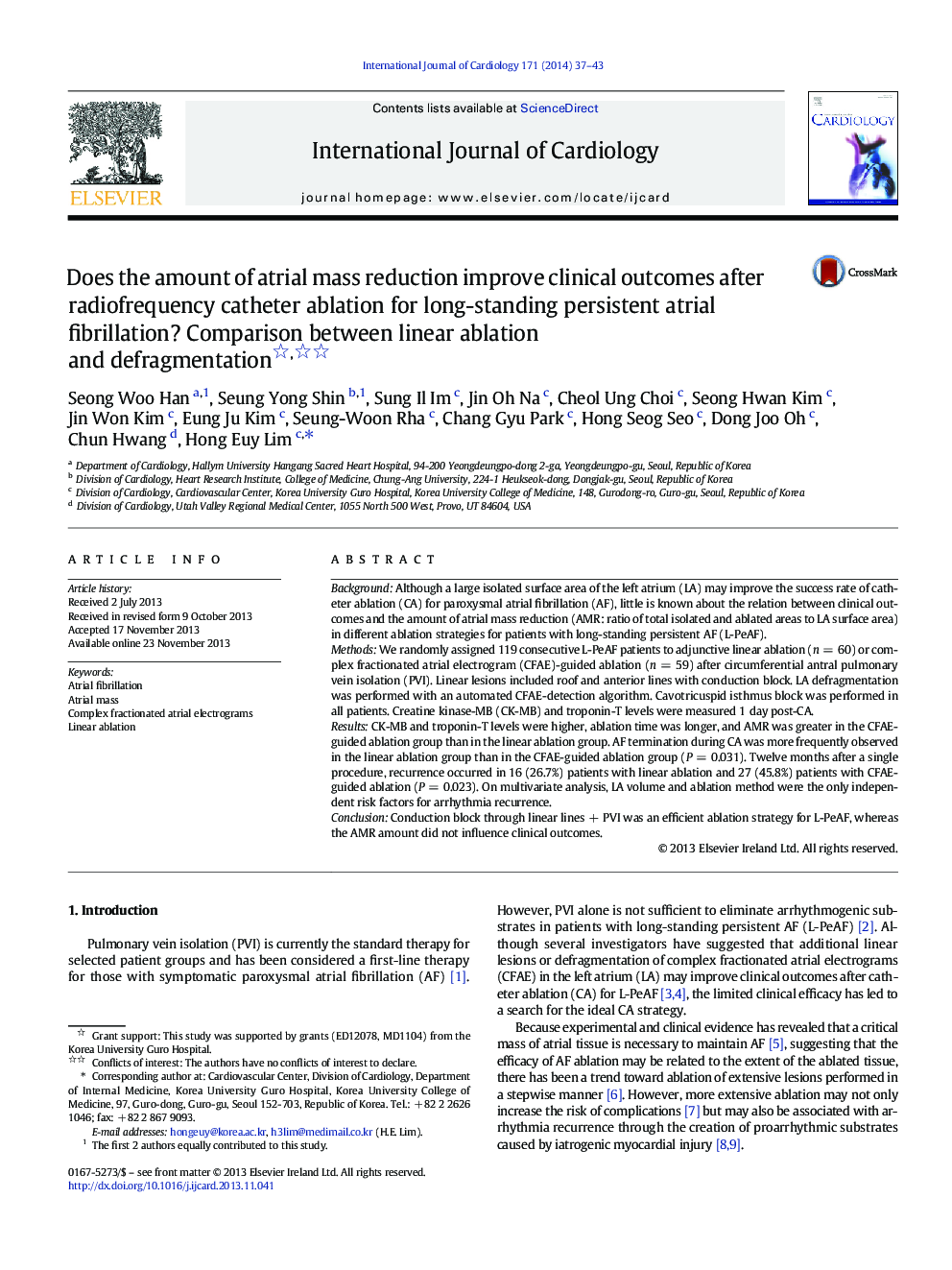| Article ID | Journal | Published Year | Pages | File Type |
|---|---|---|---|---|
| 5972712 | International Journal of Cardiology | 2014 | 7 Pages |
BackgroundAlthough a large isolated surface area of the left atrium (LA) may improve the success rate of catheter ablation (CA) for paroxysmal atrial fibrillation (AF), little is known about the relation between clinical outcomes and the amount of atrial mass reduction (AMR: ratio of total isolated and ablated areas to LA surface area) in different ablation strategies for patients with long-standing persistent AF (L-PeAF).MethodsWe randomly assigned 119 consecutive L-PeAF patients to adjunctive linear ablation (n = 60) or complex fractionated atrial electrogram (CFAE)-guided ablation (n = 59) after circumferential antral pulmonary vein isolation (PVI). Linear lesions included roof and anterior lines with conduction block. LA defragmentation was performed with an automated CFAE-detection algorithm. Cavotricuspid isthmus block was performed in all patients. Creatine kinase-MB (CK-MB) and troponin-T levels were measured 1 day post-CA.ResultsCK-MB and troponin-T levels were higher, ablation time was longer, and AMR was greater in the CFAE-guided ablation group than in the linear ablation group. AF termination during CA was more frequently observed in the linear ablation group than in the CFAE-guided ablation group (P = 0.031). Twelve months after a single procedure, recurrence occurred in 16 (26.7%) patients with linear ablation and 27 (45.8%) patients with CFAE-guided ablation (P = 0.023). On multivariate analysis, LA volume and ablation method were the only independent risk factors for arrhythmia recurrence.ConclusionConduction block through linear lines + PVI was an efficient ablation strategy for L-PeAF, whereas the AMR amount did not influence clinical outcomes.
